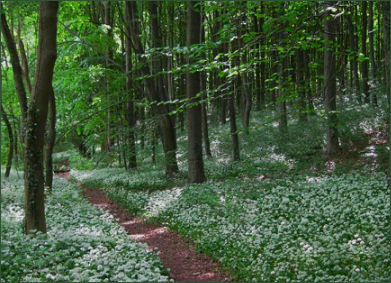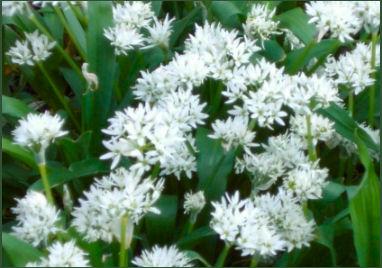Whitwell Wood
OS grid ref:- SK5278
 Whitwell Wood, an area of ancient medieval woodland, is said to be the largest wood in Europe. The wood is situated by the small Derbyshire village of Whitwell, which lies around 7 km to the west of Worksop in north-east Derbyshire.
Whitwell Wood, an area of ancient medieval woodland, is said to be the largest wood in Europe. The wood is situated by the small Derbyshire village of Whitwell, which lies around 7 km to the west of Worksop in north-east Derbyshire.
The wood once formed part of historic Sherwood Forest, it covers an area of 440 acres and is arguably the finest area of woodland in North East Derbyshire. Whitwell is mentioned in the Domesday Book of 1085 as 'silva minuta' or coppice with an area of 'silva pastilis' or wood pasture. The earliest recorded references to Whitwell are from the Anglo-Saxon charters.
A great place to visit, Whitwell Wood has easy paths laid out by Victorian gamekeepers. There are way-marked routes of varying distances and grades of difficulty.
Whitwell Wood is predominantly broad-leaved woodland and is managed by the Forestry Commission on a long-term lease from the Welbeck estate, with input from Whitwell Wood Natural History Group for wildlife. The main trees are sycamore, beech and fir, but there are also native birch, ash, sallow, alder and hawthorn. In a field bordering the eastern edge of Whitwell Wood stands the famous Three Shires Oak, situated at a point where the county borders of Derbyshire, Nottinghamshire, and Yorkshire meet.
 Numerous wild flowers carpet the woodland floor in springtime, including wild orchids, columbine, primrose, pungent wild garlic, violet, bluebells and dog daisy, the wood has a wide range of flora including over 20 species that are indicators of ancient woodland. Orange-tip Butterflies with Green-veined Whites and Speckled Woods may all be seen.
Numerous wild flowers carpet the woodland floor in springtime, including wild orchids, columbine, primrose, pungent wild garlic, violet, bluebells and dog daisy, the wood has a wide range of flora including over 20 species that are indicators of ancient woodland. Orange-tip Butterflies with Green-veined Whites and Speckled Woods may all be seen.
The freshwater Ginny Spring, located in a limestone gorge in the northern section of the wood, is a Site of Special Scientific Interest (SSSI) it has been designated for its rich flora including some species rare in Derbyshire, including species such as marsh helleborine Epipactis palustris, green helleborine Epipactis phyllanthes and broad-leaved cotton-grass. Other plants present which are also rare in Derbyshire include common butterwort Pinguicula vulgaris, bog pimpernel Anagallis tenella, columbine Aquilegia vulgaris, fragrant orchid Gymnadenia conopsea, few-flowered spikerush Eleocharis quinqueflora and birdís nest orchid Neottia nidus-avis.
The layby on the A619 ((Chesterfield-Worksop road) provides parking for the woodland which is clearly signposted from the road side
